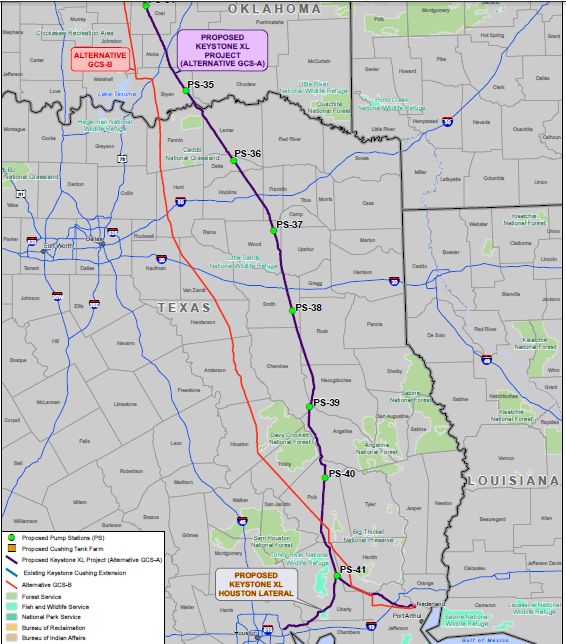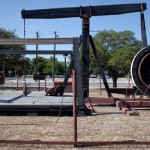The Keystone XL Pipeline is Coming to Texas

Photo by Flickr user roy.luck/Creative Commons
The company behind the Keystone XL pipeline says they will go ahead and build the portion from Cushing, Oklahoma to refineries in Texas.
David Barer of StateImpact Texas contributed reporting and research for this article.
Today’s announcement that Canadian pipeline company TransCanada would start construction on a section of its Keystone XL pipeline from Cushing, Oklahoma to Texas didn’t come as a great surprise to those who have been watching the pipeline.
Ever since the Obama administration rejected TransCanada’s original request for a presidential permit to pipe tar sands crude from Alberta, Canada to the Gulf Coast of Texas, TransCanada officials have been talking about building out the project incrementally.
“Quite frankly we need a presidential permit for about 50 feet of pipe. If we weren’t crossing that border than we wouldn’t be having this conversation,” TransCanada Public Relations representative Jim Prescott told StateImpact Texas earlier this year. “We’re ready to start putting pipe in the ground.”
The company says completing this part of the pipeline will help it move a bottleneck of crude oil from Oklahoma to refineries on the Gulf Coast. The full pipeline project – which would move crude from Alberta, Canada to Texas – is being re-submitted for approval at the federal level.
Opponents of the pipeline greeted today’s news with weary resignation.
“[It is] kind of a sad day today, but not unexpected.” farmer Julia Trigg Crawford told StateImpact Texas in a telephone interview. Crawford had filed a restraining order against the pipeline company to stop it from being able to begin construction on her Texas farm.
That restraining order was dissolved by a judge on Friday, though Crawford does not believe the legal development had anything to do with TransCanada’s decision to begin building the pipeline.
Crawford now looks forward to an April 30th court date where she will challenge the company’s status as a “common carrier,” a legal designation that allows it to claim land through eminent domain.
The Keystone XL project has also faced strong opposition from environmental groups that say the pipeline may damage sensitive areas, and that processing and drilling tar sands crude is more environmentally costly than other forms of crude oil.
“The impacts that the pipeline could have on the people of Texas aren’t going away just because TransCanada is trying to slice and dice its project into two different pieces,” Kelly Trout, spokesperson for Friends of the Earth, told StateImpact Texas.
Trout anticipated that a “fierce grassroots resistance” of the type that mobilized against the full pipeline would “rise up again” in opposition to the new plan.
TransCanada spokesperson Robert Jones told StateImpact Texas that he expected the project would be completed by midway through next year.
“This project already has over 99 percent of the easements and we’ve already awarded construction contracts to proceed with this,” said Jones. “We anticipate that we’ll be well under way into construction by midyear.”
As far as the legal battle between TransCanada and farmer Julia Trigg Crawford is concerned, Jones said, “in every state there’s a small percent of landowners we need a process in order to come to a resolution.”
Here is a map of where the Keystone XL would go through Texas:




